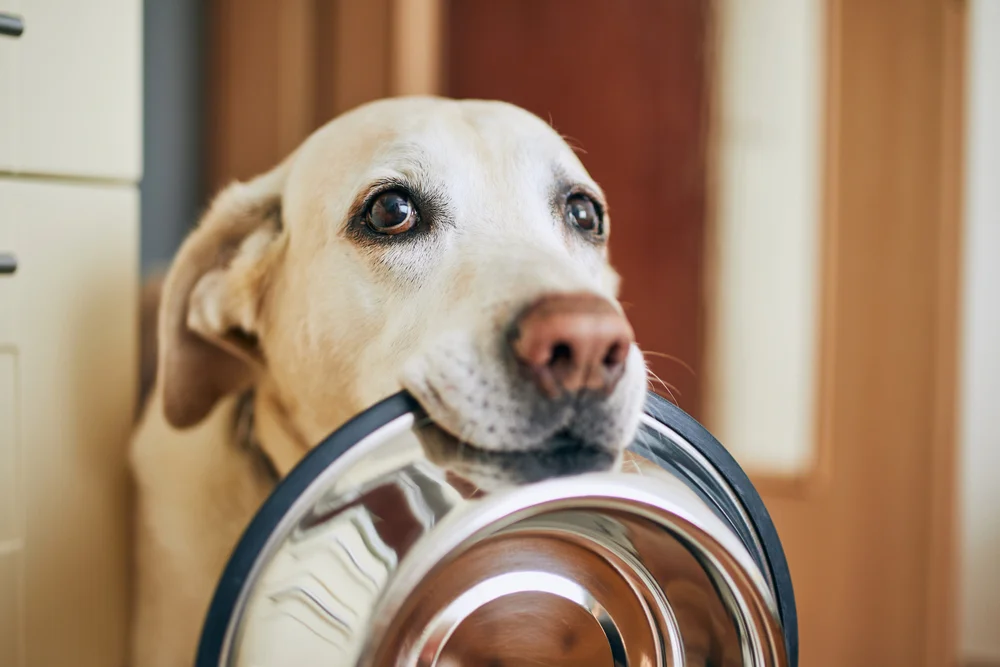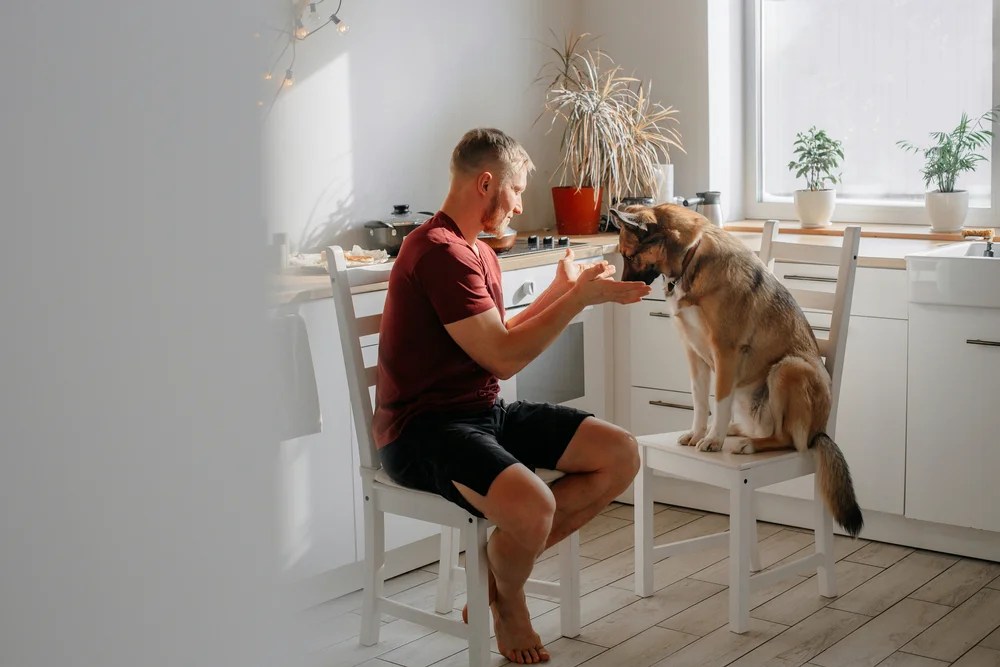Pet Feeding: Feeding your dog is more than just feeding them healthy dog food. While that’s a good start, along with finding natural dog treats they’ll love, you’re going to have to consider a little more. But what is it that needs your attention?
You make a fresh plate of nachos, you turn around, and your dog has eaten the whole thing in mere seconds. They’ll eat anything and everything, so what else do you need to do besides feeding them healthy food?

Besides ensuring your dog has healthy food to eat, you also need to make sure that they’re eating enough, not overeating, and eating on a regular schedule. Here’s the finer details:
How much your dog should eat each day
One of the first things you want to consider is what your dog needs to eat every day. And we’re not talking nutritionally. We’re talking about Calories. Your dog’s daily dietary needs are based on their resting energy requirement (RER). This is the amount of Calories they burn on a daily basis, simply by breathing and being alive — with no exercise.
For those of you into fitness, it’s similar to the human measurement of the basal metabolic rate (BMR) — the amount of Calories we burn each day simply by existing.
Also Read: At What Age do German Shepherds Baby Teeth fall out? Complete Teeth Care
Now, you may be wondering why we’re using a capital form of Calories. There’s a purpose! Calories are the traditional American way of counting calories: calories are the scientific measurement, while Calories are actually kilocalories (1000 calories). It’s a small differentiation, but something worth keeping in mind.
Now, back to your dog’s RER. Your dog’s resting energy requirement is measured by measuring your dog’s weight (in kilograms), raising that number to the ¾ power, and multiplying that by 70. In equation form, if your dog weighs Y pounds:
70*(Y kg)¾ = RER Calories
For example, if your dog weighs 20 kilograms (~44 pounds), your dog’s RER is approximately 662 Calories per day. How?
Your dog’s RER = 70*(20 kg)¾ = 662 Calories
But it goes a step further than that. The RER is your dog’s minimum amount of Calories they should eat each day. Any lower will obviously lead to weight loss. But anything over might not lead to weight gain. Why?

Your dog also moves throughout the day, from the number of times you go for walks to the amount of zoomies they do while at the dog park. Truth be told, your dog tends to need to eat as much as two times as much as their RER. For instance, working dogs need to eat two times their RER, young puppies need to eat three times their RER, and generally inactive dogs are supposed to eat approximately 1.2 times their RER.
It’s similar to humans. If you want to maintain weight, you’d need to eat your basal metabolic rate in Calories per day. But if you also walk five miles a day, you’re going to have to add approximately 450-500 Calories more to your daily intake.
You need to keep this in mind when it comes to your dog. How often do you go for walks? How long do you walk for throughout the whole day? You’ll want to take this into consideration. It could be as simple as feeding them braided bully sticks to add some Calories to their daily diet.
You also need to remember that these calculations are estimates. You don’t need to hit your dog’s caloric goal on a daily basis. Give them too many treats one day? It’s not the end of the world. Just don’t give them as many treats the next day.
How frequently should you feed your dog?
Now, how do you feed your dog throughout the day? For humans, we know that the “good” idea is to eat three or more meals a day. This ensures that we consume our 2,000 daily Calories in smaller increments, meaning we won’t overflow our stomachs and cause heartburn, indigestion, and more.
The same goes for your dog. If your dog is supposed to eat 600 Calories a day, you may want to hit the 3-meal standard. This would mean giving them 200-Calorie meals in the morning, afternoon, and at night.
But for those of us who work away from home or often aren’t around, every day, during the afternoon, it’s a good idea to separate their caloric intake into two meals a day: once in the morning, after your walk, and once at night, after your evening walk. In this case, this will be 300 Calories in the morning and at night.
For dogs who need more Calories per day, such as puppies and working dogs, you should try to stick to three meals a day, as it will aid in their overall digestion.

Create a routine
Most importantly, in pet feeding you need to understand how you’re going to feed your dog throughout the day. You may have settled on feeding them in the morning and at night, but there’s another step involved, too: when are you going to feed them?
Your dog will strive on a regular schedule. It gives them a sense of security, as they’ll have an understanding of what to expect day in and day out. For instance, they’re going to expect to go for a walk every afternoon, around 1 p.m., if you take them out for a walk at 1 p.m. every day. If you miss it one day, they’re bound to get upset, as their expectations have been thrown off.
Treat their meals the same. Try to get outside at the same time every day. If you’re doing two meals a day, that could look like going for a walk at 7 a.m. and feeding them at 7:30 a.m. Similarly, you’ll take them on a walk at 6:30 p.m. and feed them at 7 p.m. It’s a simple way to provide them with consistency they’ll appreciate, giving them a schedule they can get used to and comfortable with.
A final point
Along with following the above, pet feeding is something so important and make sure to not change up their diet too much. You may realize they’ll eat anything and everything, but a sudden dietary change could lead to an upset stomach.
Similar to their feeding schedule, try to feed them the same things day to day. If you ever want to introduce something new, introduce it slowly.
Lastly, keep an eye on their weight. Although you may be basing their caloric intake on their RER, they could be either under eating or overeating — based on their overall daily activity. If you’re worried about them not eating enough, treat them to something like natural dog chews to provide healthy, nutritional Calories.

